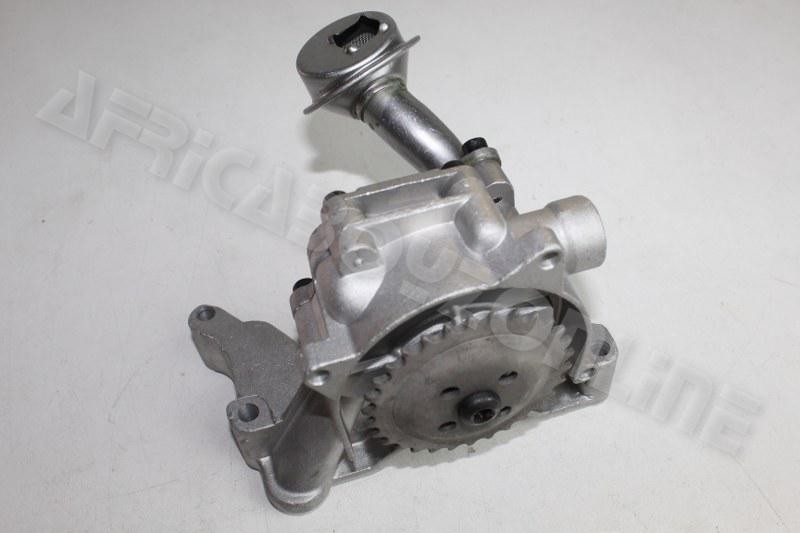Lower maintenance costs with a well-built clp engine.
Lower maintenance costs with a well-built clp engine.
Blog Article
Exactly How a Clp Engine Can Enhance Effectiveness in Different Industries
The arrival of CLP engines marks a significant change in operational efficiency across numerous fields, driven by their capacity to enhance gas consumption and lessen downtime. Industries such as production and logistics stand to gain substantially from their durable layout and constant power result, which assure to improve procedures and boost performance. As organizations increasingly focus on sustainability together with performance, the function of CLP engines ends up being even more critical. What remains to be seen is how these improvements will certainly shape the future landscape of commercial procedures and their effect on broader economic trends (clp engine).
Overview of CLP Engines
CLP engines, or Continuous Liquid Propellant engines, represent a significant innovation in propulsion technology, especially for space applications. These engines use a constant feed system that permits the continual expulsion of propellant, resulting in improved performance and efficiency contrasted to traditional solid or hybrid propulsion systems. By maintaining a consistent circulation of fluid propellant, CLP engines can accomplish much more exact thrust control, which is crucial for navigating spacecraft in numerous objective situations.
The layout of CLP engines integrates advanced products and innovative gas management systems. clp engine. This causes reduced weight and enhanced dependability, vital aspects for long-duration space objectives. Moreover, the constant operation lessens the risk of burning instability, a common challenge in standard rocket engines.

Benefits in Production
The manufacturing of Continuous Liquid Propellant (CLP) engines offers a number of noteworthy benefits that enhance both effectiveness and cost-effectiveness. One of the key benefits is the structured manufacturing process, which lowers the complexity related to standard propulsion systems. By making use of liquid propellant, producers can achieve greater accuracy in engine efficiency, bring about enhanced energy outcome and minimized waste.
In addition, CLP engines assist in a higher level of modularity, allowing for less complicated integration into numerous production lines. This adaptability can significantly lower preparations and improve general operational versatility. Making use of CLP innovation additionally often tends to decrease the demand for extensive maintenance due to fewer relocating components, which equates into lowered downtime and functional prices.

Applications in Logistics
Leveraging Continuous Fluid Propellant (CLP) engines in logistics supplies significant benefits in functional effectiveness and reliability. These engines offer a durable more remedy for different transportation needs, enabling the seamless motion of products across large distances. The intrinsic style of CLP engines enables constant power result, which translates into smoother and extra predictable transportation timetables.
Among the vital applications of CLP engines in logistics remains in heavy-duty freight transport, where they can drive both ground and aerial lorries. Their capability to preserve high performance under differing load conditions ensures that delivery timelines are met, consequently boosting consumer satisfaction. Furthermore, CLP engines can be incorporated into automated logistics systems, facilitating real-time monitoring and maximizing course planning.
Furthermore, the longevity of CLP engines decreases maintenance downtime, permitting logistics business to maximize their functional capabilities. This is particularly useful in warehousing operations, where performance in taking care of and carrying goods is vital. As logistics remains to advance, the assimilation of CLP engines represents a forward-thinking method that not just boosts efficiency yet additionally supports the market's growing needs for integrity and speed.
Effect On Energy Efficiency
Exactly How do Continuous Liquid Propellant (CLP) engines boost energy performance in transportation? CLP engines utilize a constant circulation of liquid fuel, maximizing combustion procedures and preserving a stable thrust result. This layout reduces energy losses connected with traditional burning engines, where gas delivery can i loved this differ and cause ineffectiveness.
The constant operation of CLP engines enables a much more efficient thermal cycle, leading to greater certain impulse compared to traditional engines. clp engine. This equates to decreased fuel consumption for the same amount of work done, considerably reducing functional prices throughout numerous transport markets, including aviation and maritime markets
Furthermore, the ability of CLP engines to maintain optimal efficiency under differing tons conditions decreases the demand for constant acceleration and slowdown, better improving gas efficiency. Boosted energy efficiency not only adds to set you back savings yet likewise brings about decrease greenhouse gas exhausts, aligning with worldwide sustainability objectives.
Future Trends and Innovations
Emerging improvements in Constant Fluid Propellant (CLP) engine modern technology promise to reinvent the landscape of transportation performance and sustainability. As markets pivot toward greener options, CLP engines stand at the center, integrating innovative products and style techniques that improve efficiency while decreasing environmental effect.
One of one of the most appealing trends is the adoption of hybrid systems that combine CLP engines with renewable resource resources. This harmony can enhance fuel intake and decrease emissions, lining up with global sustainability goals. In addition, improvements in computational fluid characteristics (CFD) are promoting the style of even more aerodynamically reliable engines, leading to decreased drag and boosted gas efficiency.
Additionally, the growth of smart surveillance systems is readied to improve functional effectiveness. These systems take advantage of information analytics and IoT technology to maximize engine performance in real-time, guaranteeing that the engines run within their most effective criteria.
As study remains to discover alternate propellant solutions-- such as biofuels and synthetic gas-- the future of CLP engines looks promising. By taking advantage of these innovations, markets can not only enhance their performance yet likewise add significantly to a cleaner, a lot more sustainable future in transport.
Conclusion
In final thought, CLP engines Get More Info represent a substantial advancement in effectiveness across numerous markets. Their ability to enhance fuel intake and lower functional prices, integrated with a continual feed system, boosts power output and operational reliability. The assimilation of advanced products and fewer relocating components minimizes maintenance needs, while placement with sustainability goals settings CLP engines as a crucial technology for the future. Continued technology in this area assures further renovations in performance and ecological efficiency.
Report this page